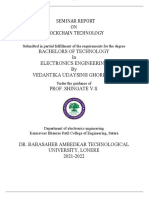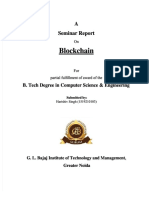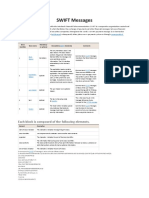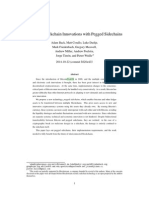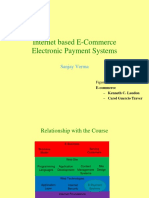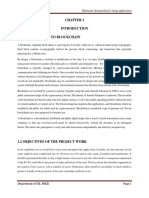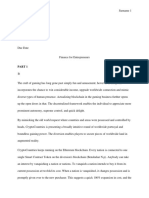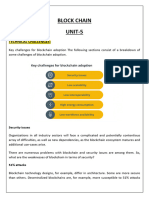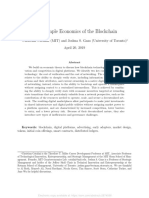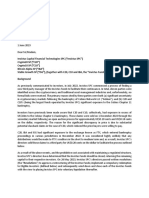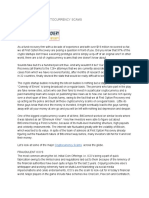0% found this document useful (0 votes)
297 views12 pagesBlock Chain
Blockchain is a shared immutable ledger that facilitates the process of recording transactions and tracking assets across a business network. Anything of value can be tracked and traded on the Blockchain network. Blockchain stores information electronically in a digital format to make transactions secure without an intermediary. It allows digital information to be recorded and distributed across a network of computers in a way that makes the records nearly impossible to hack or change without authorization.
Uploaded by
ISHA AGGARWALCopyright
© © All Rights Reserved
We take content rights seriously. If you suspect this is your content, claim it here.
Available Formats
Download as DOCX, PDF, TXT or read online on Scribd
0% found this document useful (0 votes)
297 views12 pagesBlock Chain
Blockchain is a shared immutable ledger that facilitates the process of recording transactions and tracking assets across a business network. Anything of value can be tracked and traded on the Blockchain network. Blockchain stores information electronically in a digital format to make transactions secure without an intermediary. It allows digital information to be recorded and distributed across a network of computers in a way that makes the records nearly impossible to hack or change without authorization.
Uploaded by
ISHA AGGARWALCopyright
© © All Rights Reserved
We take content rights seriously. If you suspect this is your content, claim it here.
Available Formats
Download as DOCX, PDF, TXT or read online on Scribd
/ 12
